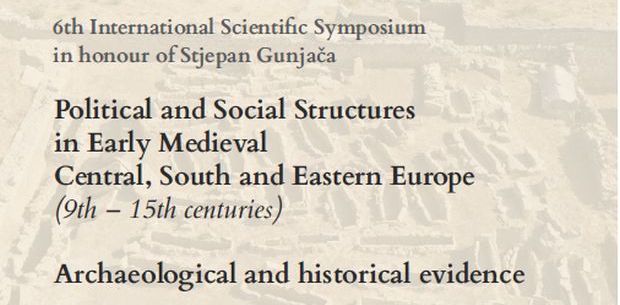Na 6. International Scientific Symposium in honour of Stjepan Gunjača “Political and Social Structures in Early Medieval Central, South and Eastern Europe (9th – 15th centuries). Archaeological and historical evidence”, koji se održavao u Splitu od 8. do 11. studenoga 2023. u Splitu, dr. sc. Vinicije B. Lupis je s kosovskim kolegom Elvisom Shalom održao izlaganje pod nazivom “Two Limoges medallions in the reliquary of the cathedral of Dubrovnik”
Sažetak izlaganja
Vinicije B. Lupis, Elvis Shala
Two Limoges medallions in the reliquary of the cathedral of Dubrovnik
From the beginning of the 12th century, Limoges became the main centre for the production of polychrome enamels. The evolution of the champlevé enamelling technique in this region during the last four decades of the 12th century was fundamentally linked to the patronage of the House of Plantagenet, who were at that time the rulers of Aquitaine, but also to the rise of the cult of saints in the Middle Ages and to the importance of objects of personal devotion. The lack of information about the organization and geographical location of workshops and artists, both in time and in space, makes it difficult to precisely date Limoges enamels. However, by following the research that has been conducted in recent years, we can still agree that it developed between 1150 and 1220. In the Dubrovnik treasury, we find it on two reliquaries: the hands of St. Fosca (XXVIII.) and on the reliquary of the hand of St. Laurentius (CLII.), which are each decorated with one enamel medallion from one of the Limoges workshops (opus lemovicense). The medallions served as a precious appliqué- instead of a precious stone- on the reliquary. This was a very common procedure in the export of finished products which would then be applied to other works of art. Both hand reliquaries from Dubrovnik belong to the “speaking reliquary” type (German: sprechenden), and are dated to the end of the 12th century. and the beginning of 13th century. The reliquary of the hand of St. Laurentius was recorded in the first preserved inventory of the Reliquary of the Dubrovnik Cathedral from 1335. The two Limoges medallions from Dubrovnik are particularly valuable examples of the expansion of French workshops to the south, and along with the Apulian specimens from Italy, they are the southernmost preserved specimens in the Adriatic basin.

 Institut društvenih znanosti Ivo Pilar Pilar
Institut društvenih znanosti Ivo Pilar Pilar





